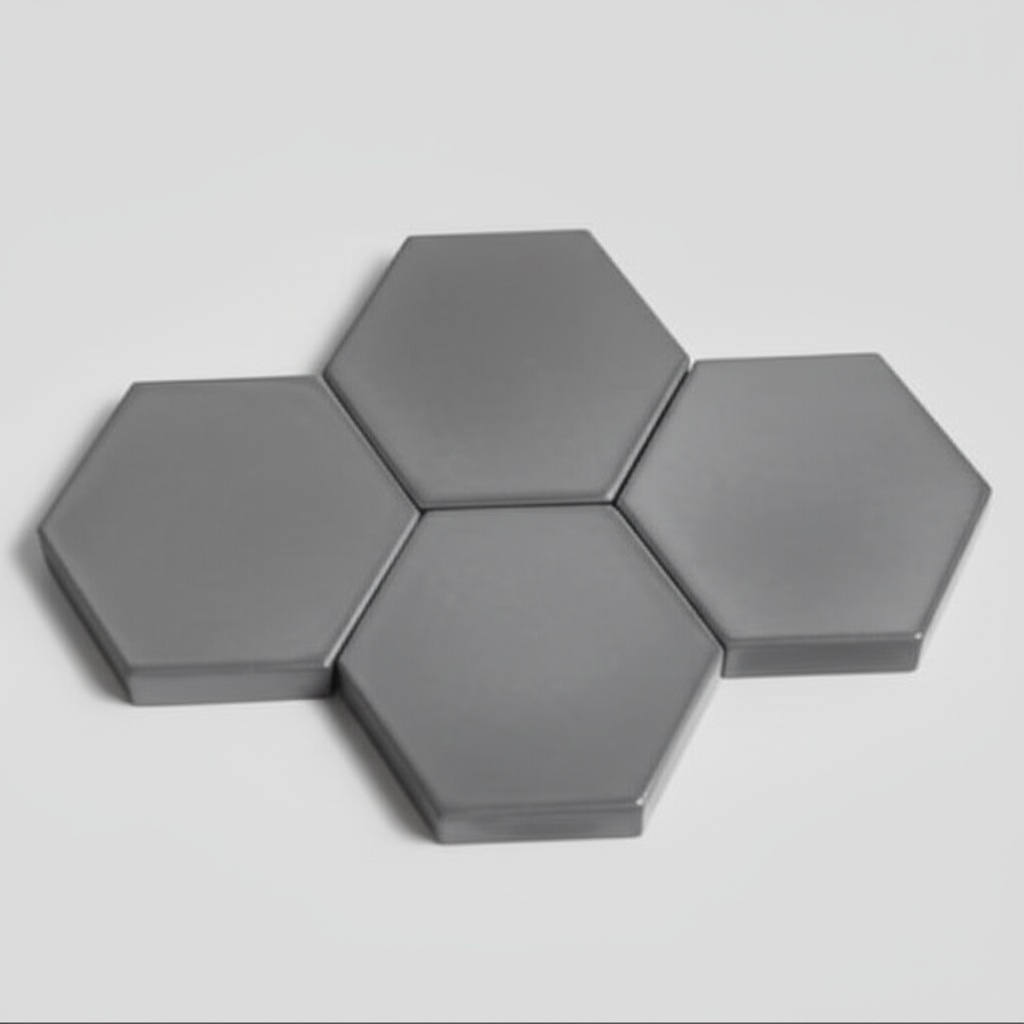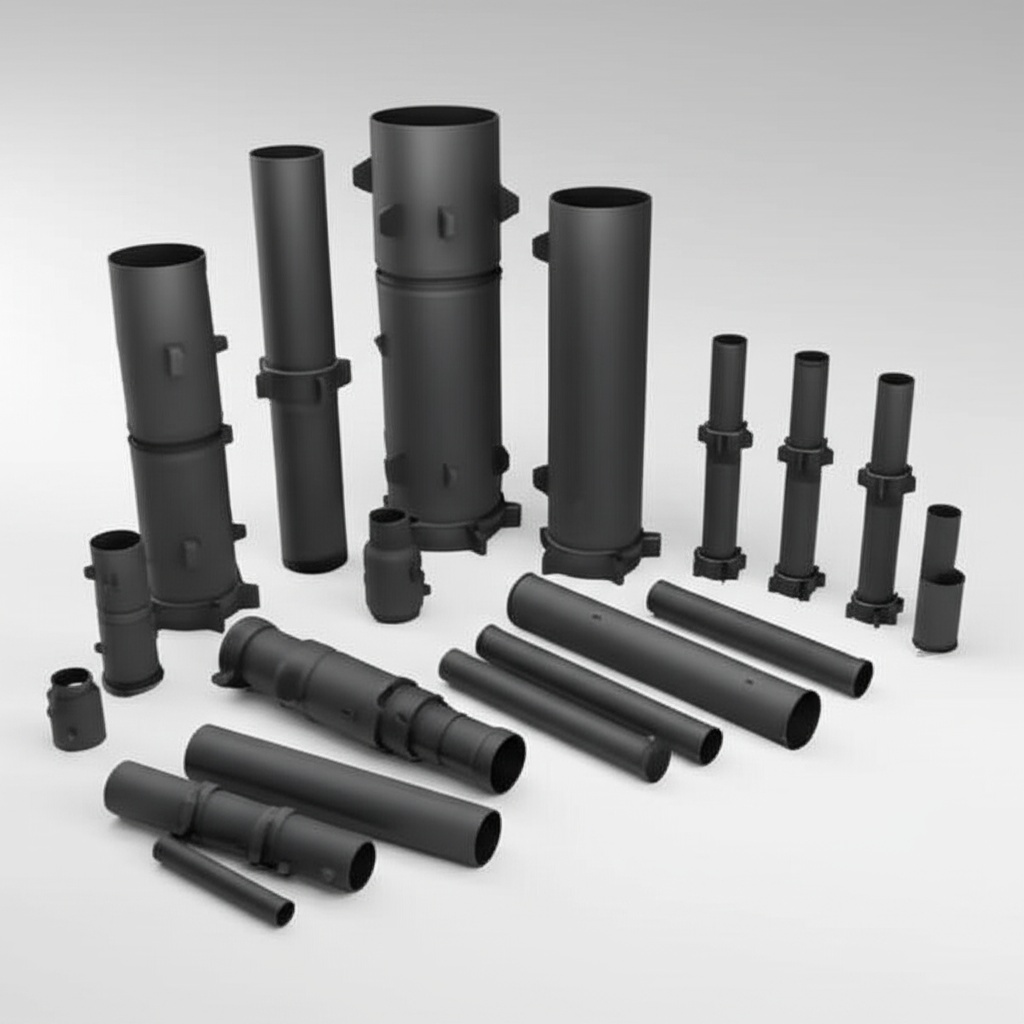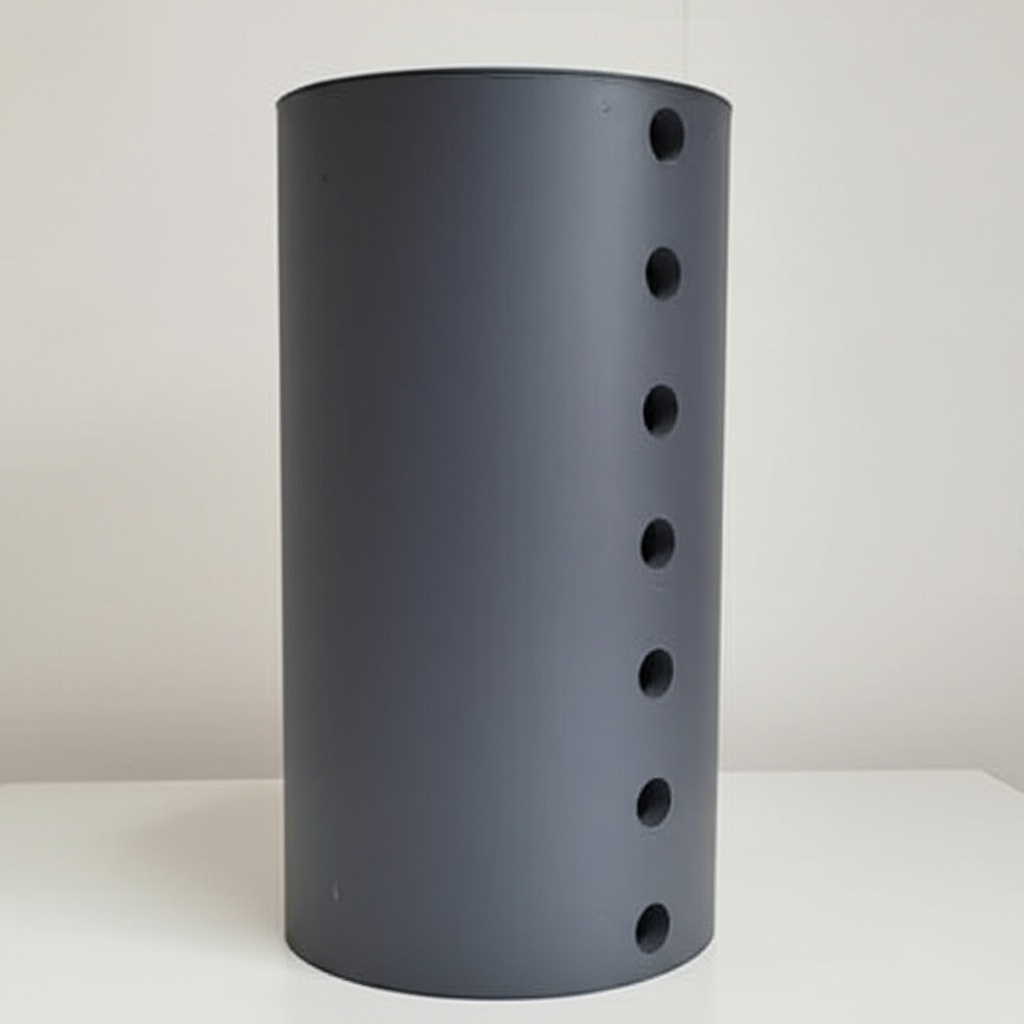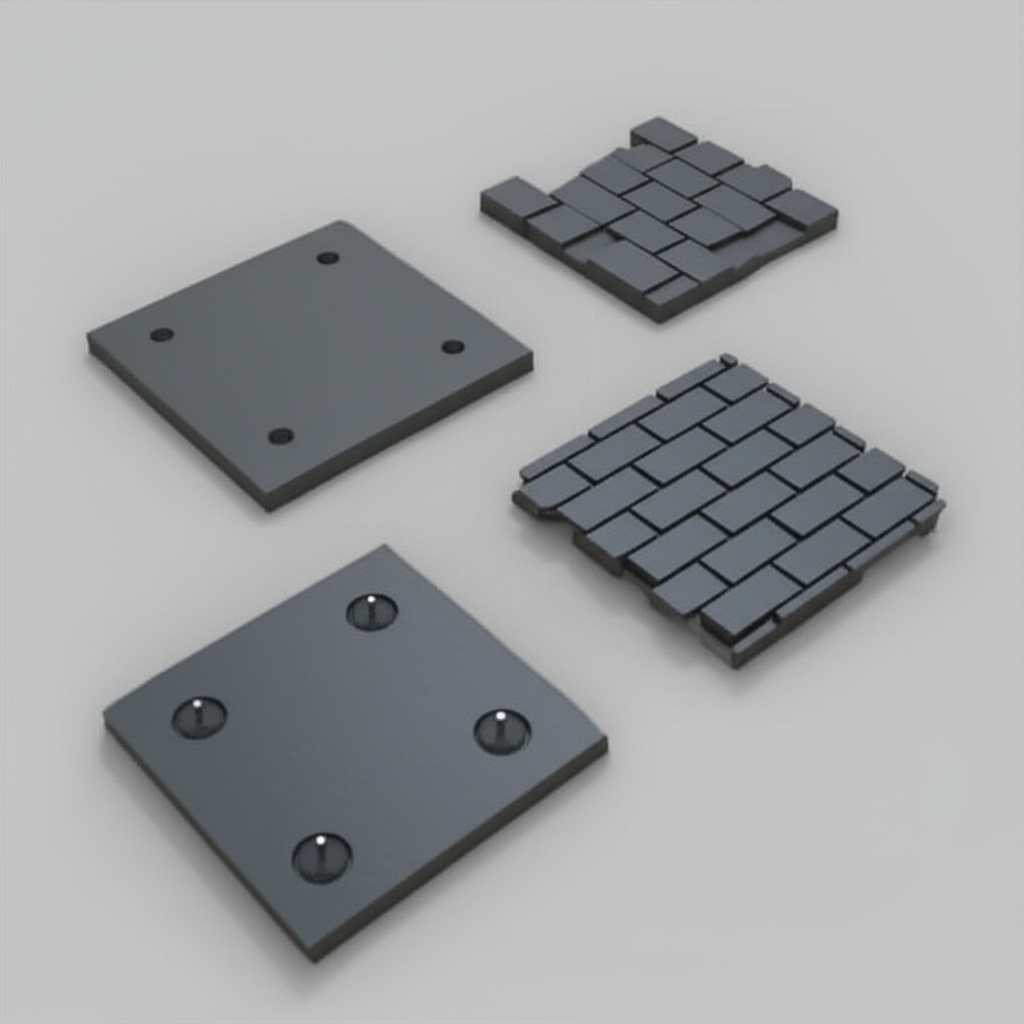Sourcing Quality SiC Parts from Brazil

Share
Sourcing Quality SiC Parts from Brazil
In today’s rapidly evolving industrial landscape, the demand for materials that can withstand extreme conditions is at an all-time high. Among these, custom silicon carbide (SiC) products stand out as a superior choice for high-performance applications. Engineered for exceptional thermal resistance, wear resistance, and chemical inertness, SiC components are becoming indispensable in critical sectors ranging from semiconductors and aerospace to power electronics and renewable energy.
While the global supply chain for advanced technical ceramics is diverse, understanding the nuances of sourcing high-quality SiC parts is crucial for engineers, procurement managers, and technical buyers. This blog post delves into the benefits of custom SiC, key design considerations, and how to select a reliable supplier for your specific needs, even touching on emerging opportunities for sourcing quality SiC parts from Brazil.
Main Applications of Custom SiC Components
Custom silicon carbide parts are highly valued across a multitude of industries due to their unparalleled properties. Their ability to perform reliably in harsh environments makes them ideal for:
- Semiconductors: SiC wafers and components are vital for high-power, high-frequency, and high-temperature semiconductor devices, enabling more efficient and compact designs for power electronics and integrated circuits.
- Automotive: From electric vehicle (EV) charging systems and inverters to braking systems and engine components, SiC enhances efficiency, reduces weight, and improves durability.
- Aerospace: In jet engines, rocket nozzles, and high-temperature sensor applications, SiC’s thermal stability and strength are critical for safety and performance.
- Power Electronics: SiC power devices offer significantly lower switching losses and higher operating temperatures than silicon-based counterparts, leading to more efficient power conversion.
- Renewable Energy: Essential for solar inverters, wind turbine converters, and energy storage systems, where efficiency and longevity are paramount.
- Metallurgy: Used in furnace components, crucibles, and refractory linings due to its excellent resistance to high temperatures and corrosive molten metals.
- Defense: In armor plating, high-performance optics, and missile components, SiC provides superior strength-to-weight ratios and thermal management.
- Chemical Processing: Ideal for pump components, valve seats, and heat exchangers due to its exceptional chemical inertness and corrosion resistance.
- LED Manufacturing: SiC substrates are used in the production of high-brightness LEDs, enhancing their efficiency and lifespan.
- Industrial Machinery: In wear parts, bearings, seals, and nozzles, SiC significantly extends the operational life of equipment in abrasive environments.
- Telecommunications: Critical for high-frequency applications and thermal management in advanced communication systems.
- Oil and Gas: Used in drilling equipment, downhole tools, and seals where resistance to high pressure, temperature, and corrosive fluids is essential.
- Medical Devices: In certain specialized instruments requiring biocompatibility and extreme wear resistance.
- Rail Transportation: Components for braking systems and power conversion units benefit from SiC’s durability and efficiency.
- Nuclear Energy: In structural components and fuel cladding, leveraging its radiation resistance and high-temperature stability.
Why Choose Custom Silicon Carbide?
Opting for custom silicon carbide components offers significant advantages over standard materials or off-the-shelf parts:
- Tailored Performance: Custom designs allow for precise optimization of material properties and geometries to meet specific operational requirements, maximizing efficiency and lifespan.
- Extreme Thermal Resistance: SiC maintains its strength and integrity at temperatures exceeding 1,500°C, far beyond what many metals can withstand.
- Exceptional Wear Resistance: Its inherent hardness makes SiC highly resistant to abrasion, erosion, and friction, ideal for demanding mechanical applications.
- Superior Chemical Inertness: SiC exhibits remarkable resistance to acids, alkalis, and corrosive gases, making it suitable for harsh chemical environments.
- High Thermal Conductivity: Crucial for effective heat dissipation in power electronics and other thermally sensitive applications.
- Lightweight: Despite its strength, SiC is relatively lightweight, contributing to energy efficiency and reduced system mass.
- High Modulus of Elasticity: Provides excellent stiffness and dimensional stability under load.
Recommended SiC Grades and Compositions
The performance of SiC parts can vary significantly depending on their manufacturing process and composition. Key grades include:
- Reaction-Bonded SiC (RBSiC/SiSiC): Produced by infiltrating porous SiC compacts with molten silicon. It offers excellent thermal shock resistance, good strength, and high hardness. Ideal for larger, complex shapes like kiln furniture and mechanical seals.
- Sintered SiC (SSiC): Achieved by sintering fine SiC powder at high temperatures with small amounts of additives. SSiC boasts very high purity, exceptional wear resistance, and superior corrosion resistance, making it suitable for semiconductor equipment and high-performance pump parts.
- Nitride-Bonded SiC (NBSiC): Created by bonding SiC grains with a silicon nitride matrix. It offers good mechanical strength and thermal shock resistance, often used in less demanding refractory applications.
- Recrystallized SiC (ReSiC): Formed by heating SiC powder to high temperatures, allowing grains to grow and bond without a binder. Offers high purity and excellent thermal conductivity, common in semiconductor processing.
The choice of SiC grade is critical and depends on the specific application’s thermal, mechanical, and chemical requirements.
Design Considerations for SiC Products
Designing with silicon carbide requires a deep understanding of its unique properties. Engineers must consider:
- Material Brittleness: SiC is a ceramic, meaning it’s inherently brittle. Designs should minimize stress concentrations, sharp corners, and sudden changes in cross-section to prevent fracture.
- Geometric Complexity: While modern machining techniques can produce intricate shapes, overly complex geometries can increase manufacturing costs and lead times. Collaboration with your SiC supplier from the design phase is crucial.
- Wall Thickness: Uniform wall thickness is generally preferred to ensure consistent cooling during sintering and reduce internal stresses.
- Tolerances: Achieve tight tolerances through advanced machining, but understand that ultra-precision can add significant cost.
- Surface Finish: The desired surface finish impacts performance and cost. Lapping and polishing can achieve very smooth surfaces but are more labor-intensive.
- Joints and Fasteners: Designing for SiC often involves innovative joining methods or the integration of specific features for mechanical fastening, as traditional welding is not applicable.
Tolerance, Surface Finish & Dimensional Accuracy
Achievable tolerances and surface finishes for SiC parts depend heavily on the material grade and the post-processing steps. Generally:
| Characteristic | Typical Range (As-Fired) | Achievable with Post-Processing (Grinding/Lapping) |
|---|---|---|
| Dimensional Tolerance | ±1% to ±0.5% (approx. ±0.1mm for smaller parts) | ±0.01mm to ±0.005mm |
| Surface Roughness (Ra) | 1.6 µm to 6.3 µm | 0.1 µm to 0.4 µm (or better with polishing) |
| Flatness | Varies, typically 0.05mm/100mm | 0.005mm/100mm |
For critical applications requiring extreme precision, post-sintering grinding, lapping, and polishing are employed to achieve the desired dimensional accuracy and surface quality.
Post-Processing Needs for SiC Components
While SiC offers excellent inherent properties, post-processing can further enhance its performance and suitability for specific applications:
- Grinding: Essential for achieving precise dimensions and improving surface finish after sintering. Diamond grinding wheels are typically used due to SiC’s extreme hardness.
- Lapping & Polishing: Creates ultra-smooth surfaces, critical for sealing applications, optical components, and parts subject to sliding friction.
- Sealing: In some cases, SiC parts may require additional sealing or impregnation for enhanced impermeability, particularly in vacuum or high-pressure environments.
- Coating: Specialized coatings (e.g., CVD SiC coatings) can further improve surface hardness, corrosion resistance, or introduce specific functionalities like electrical conductivity/insulation.
- Joining: Developing robust joining methods (e.g., brazing, diffusion bonding) for SiC to SiC or SiC to metal is crucial for complex assemblies.
Common Challenges and How to Overcome Them
Despite its advantages, working with SiC presents certain challenges:
- Brittleness: As a ceramic, SiC is brittle. Overcome this by careful design (avoiding stress concentrators), proper handling, and ensuring adequate support during installation and operation.
- Machining Complexity: SiC’s hardness makes it difficult and expensive to machine. Work closely with suppliers who have specialized diamond grinding capabilities. Design parts to minimize post-sintering machining whenever possible.
- Thermal Shock: While SiC has good thermal shock resistance, rapid and extreme temperature changes can still cause failure. Design with appropriate thermal expansion considerations and integrate features that mitigate thermal gradients.
- Cost: SiC parts can be more expensive than conventional metal components. Justify the cost by demonstrating superior performance, extended lifespan, and reduced maintenance in demanding environments.
- Joining: Integrating SiC into larger assemblies requires specialized joining techniques due to its high melting point and chemical inertness.
How to Choose the Right SiC Supplier
Selecting a reliable supplier for custom silicon carbide parts is paramount. Look for a partner with:
- Technical Expertise: A deep understanding of material science, ceramic processing, and engineering design. They should offer design support and material recommendations.
- Manufacturing Capabilities: State-of-the-art facilities for forming, sintering, and precision machining of SiC. This includes advanced grinding, lapping, and polishing equipment.
- Quality Control: Robust quality management systems, certifications (e.g., ISO 9001), and in-house testing capabilities to ensure consistency and reliability.
- Material Range: Ability to produce various SiC grades (SSiC, RBSiC, etc.) to match diverse application needs.
- Customization Support: Experience in developing bespoke solutions for unique industrial challenges, from prototyping to full-scale production. Find out more about customizing support here.
- Industry Experience: Proven track record serving industries like yours, understanding their specific requirements and standards.
- Supply Chain Reliability: A stable and transparent supply chain, especially critical for high-volume orders.
When considering global sourcing, it’s worth noting the significant advancements in certain regions. For instance, the hub of China’s silicon carbide customizable parts manufacturing is situated in Weifang City of China. This region has become home to over 40 silicon carbide production enterprises of various sizes, collectively accounting for more than 80% of the nation’s total silicon carbide output.
We, Sicarb Tech, have been a pivotal force in this development. Since 2015, we have been introducing and implementing advanced silicon carbide production technology, assisting local enterprises in achieving large-scale production and significant technological advancements in product processes. We’ve been a direct witness to the emergence and ongoing development of this robust local silicon carbide industry.
Sicarb Tech operates as part of Chinese Academy of Sciences(Weifang) Innovation Park, an entrepreneurial park that collaborates closely with the National Technology Transfer Center of the Chinese Academy of Sciences. This national-level innovation and entrepreneurship service platform integrates innovation, entrepreneurship, technology transfer, venture capital, incubation, acceleration, and scientific and technological services.
Capitalizing on the robust scientific, technological capabilities and talent pool of the Chinese Academy of Sciences , and backed by the Chinese Academy of Sciences National Technology Transfer Center, Sicarb Tech serves as a crucial bridge. We facilitate the integration and collaboration of essential elements in the transfer and commercialization of scientific and technological achievements. Furthermore, we’ve established a comprehensive service ecosystem spanning the entire technology transfer and transformation process. This commitment ensures more reliable quality and supply assurance within China.
At Sicarb Tech, we possess a domestic top-tier professional team specializing in the customized production of silicon carbide products. Under our support, over 502 local enterprises have benefited from our technologies. We offer a wide array of technologies, including material science, process engineering, design, measurement, and evaluation, along with an integrated process from raw materials to finished products. This comprehensive capability enables us to meet diverse customization needs. We are confident we can offer you higher-quality, cost-competitive customized silicon carbide components from China.
Beyond supplying components, we are also committed to assisting you in establishing a specialized factory. If you need to build a professional silicon carbide products manufacturing plant in your country, Sicarb Tech can provide you with technology transfer for professional silicon carbide production, along with a full range of services (turnkey project). This includes factory design, procurement of specialized equipment, installation and commissioning, and trial production. This comprehensive support empowers you to own a professional silicon carbide products manufacturing plant while ensuring a more effective investment, reliable technology transformation, and a guaranteed input-output ratio. Learn more about our technology transfer services here.
Cost Drivers and Lead Time Considerations
The cost and lead time for custom SiC parts are influenced by several factors:
| Cost Driver | Impact |
|---|---|
| Material Grade | SSiC is generally more expensive than RBSiC due to higher purity and processing costs. |
| Part Complexity | Intricate geometries, tight tolerances, and complex features increase machining time and tooling costs. |
| Volume | Higher volumes typically lead to lower per-unit costs due to economies of scale in manufacturing. |
| Post-Processing | Grinding, lapping, polishing, or special coatings add to the overall cost. |
| Design for Manufacturability (DFM) | Designs optimized for SiC manufacturing can significantly reduce costs and lead times. |
Lead times vary widely based on part complexity, supplier capacity, and material availability. It’s crucial to discuss timelines early in the project to align expectations.
Frequently Asked Questions (FAQ)
- Q1: Is silicon carbide electrically conductive?
- A1: Pure silicon carbide is a semiconductor, meaning its electrical conductivity lies between that of a conductor and an insulator. Its conductivity can be precisely controlled through doping, making it ideal for power electronic devices.
- Q2: Can silicon carbide be repaired if damaged?
- A2: Repairing SiC parts, especially those under critical stress, is generally not recommended due to its brittle nature and the difficulty in achieving a reliable bond. Replacement is often the safer and more cost-effective option for critical components.
- Q3: What are the primary advantages of SiC over traditional metals in high-temperature applications?
- A3: SiC offers significantly higher temperature resistance (up to 1,600°C in some grades), superior hardness and wear resistance, and excellent chemical inertness compared to most metals. This leads to longer operational life and reduced maintenance in harsh environments.
Conclusion
Custom silicon carbide parts are at the forefront of advanced material solutions, enabling groundbreaking advancements across diverse industries. Their unparalleled thermal, mechanical, and chemical properties make them indispensable for applications where conventional materials simply fail. By understanding the advantages of custom SiC, considering crucial design factors, and partnering with a reputable supplier like Sicarb Tech, engineers and procurement managers can unlock the full potential of these exceptional technical ceramics.
Whether you are in semiconductors, aerospace, power electronics, or any industry demanding peak performance in extreme conditions, investing in high-quality, custom SiC components will drive innovation, enhance efficiency, and ensure the long-term reliability of your systems. For custom silicon carbide solutions and expert technical support, contact us today.

About the Author: Sicarb Tech
We provide clear and reliable insights into silicon carbide materials, component manufacturing, application technologies, and global market trends. Our content reflects industry expertise, practical experience, and a commitment to helping readers understand the evolving SiC landscape.




